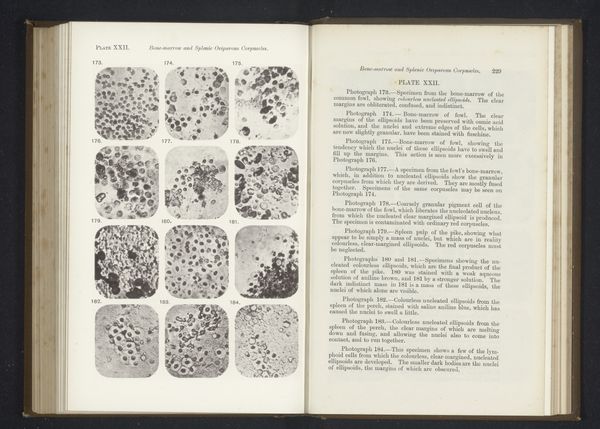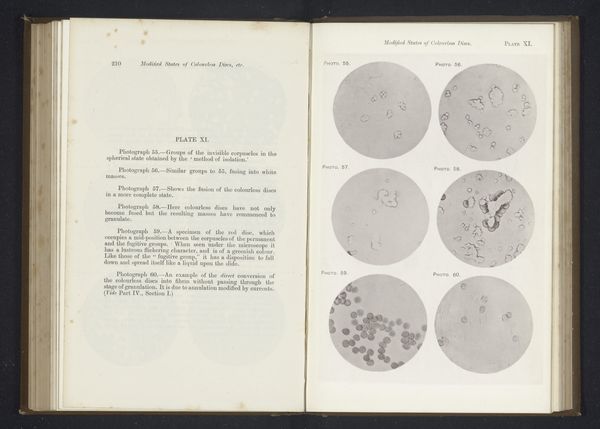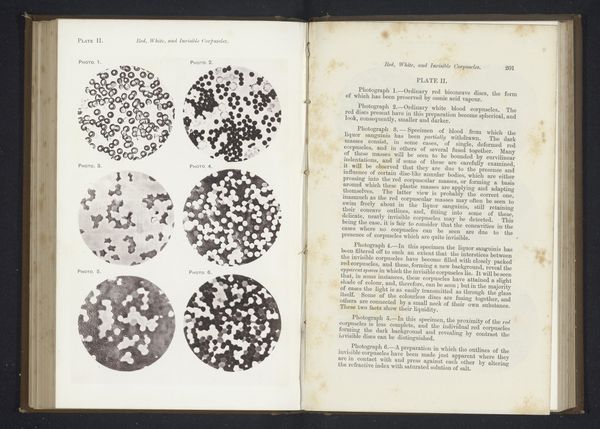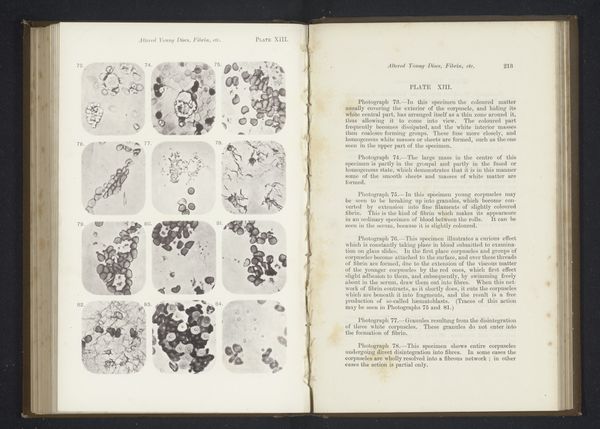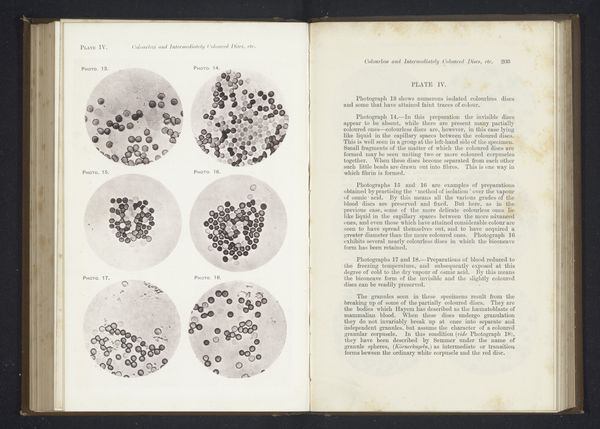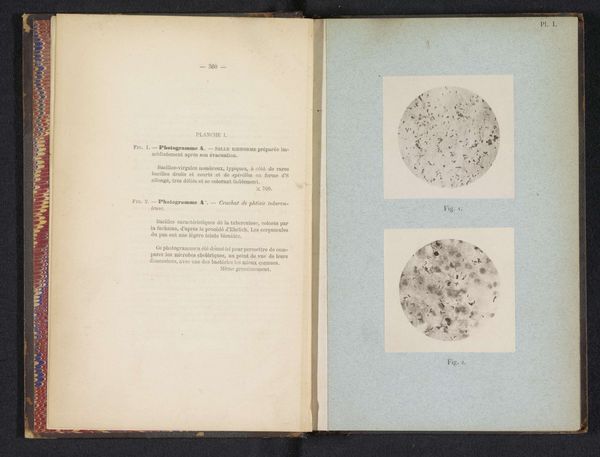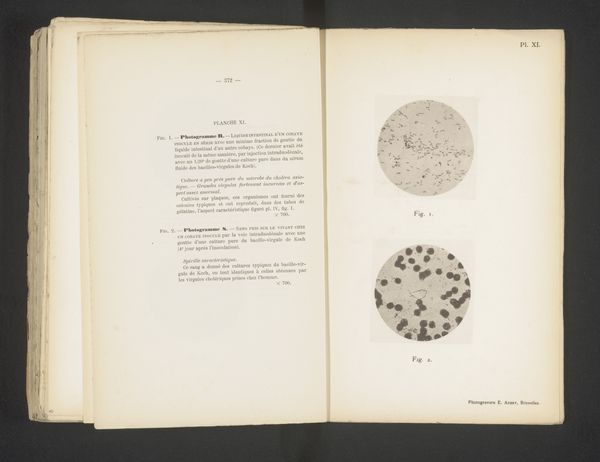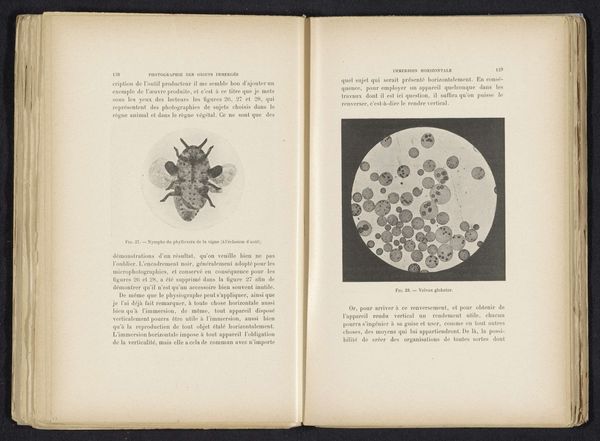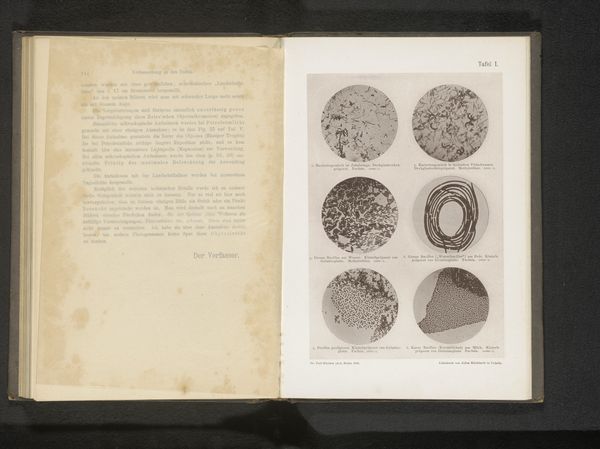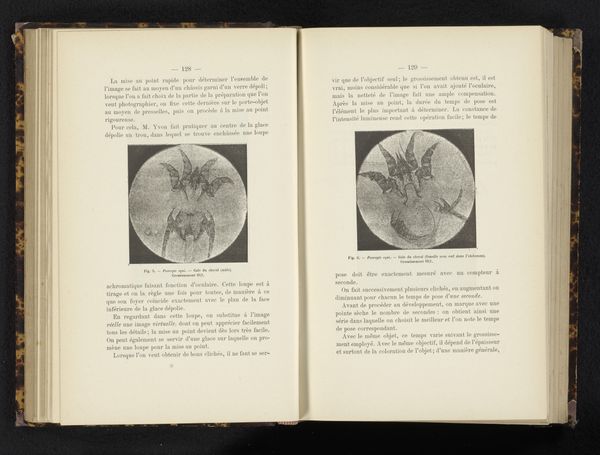
print, photography
# print
#
photography
Dimensions: height 213 mm, width 135 mm
Copyright: Rijks Museum: Open Domain
Editor: Here we have "Twaalf vergrotingen van bloedlichaampjes en myeline," a print photograph by Richard Norris, created before 1882. The page shows magnified images of what appear to be blood cells, or at least microscopic phenomena. The arrangements are intriguing. What strikes you about this image? Curator: What I find compelling here is the intersection of science and art, particularly how it reflects the sociopolitical context of the late 19th century. How might we consider these microscopic images within the larger framework of scientific advancements and their relationship to power structures of the time? Editor: Power structures? I see science, but how is that related to societal control? Curator: Think about it: Scientific progress was often used to justify social hierarchies. The ability to visualize and classify these "blood corpuscles and myelin" offered a supposed objective basis for understanding human biology, potentially reinforcing existing racial or gendered biases. Who had access to this knowledge, and how might it have been weaponized? Consider also the legacy of colonialism and the problematic justifications advanced by the pseudosciences of the period. Does that perhaps prompt further questions, even anxieties? Editor: So, you're saying that even seemingly objective scientific imagery can be tied to ideology and control? Curator: Precisely. And the very act of photographing, magnifying, and presenting these images becomes an act of defining and categorizing. It begs the question: what are the ethics of visualizing the unseen, especially when such visualization can be used to reinforce prejudice or bias? Editor: It’s interesting to think about how photography itself becomes a tool with social implications beyond just observation. It makes me look at these images in a new way. Curator: Agreed. It invites us to examine how art, science, and societal structures are intertwined and to critically assess the narratives they perpetuate.
Comments
No comments
Be the first to comment and join the conversation on the ultimate creative platform.
